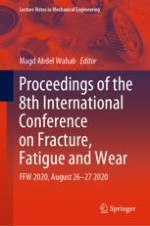2021 | OriginalPaper | Chapter
Study of Sliding Wear in Rail and Wheel Steels: Effect of Hardness Ratio and Normal Load in Pin on Disc Test
Authors : Thiago Gomes Viana, Gustavo Tressia, Amilton Sinatora
Published in: Proceedings of the 8th International Conference on Fracture, Fatigue and Wear
Publisher: Springer Singapore
Activate our intelligent search to find suitable subject content or patents.
Select sections of text to find matching patents with Artificial Intelligence. powered by
Select sections of text to find additional relevant content using AI-assisted search. powered by
